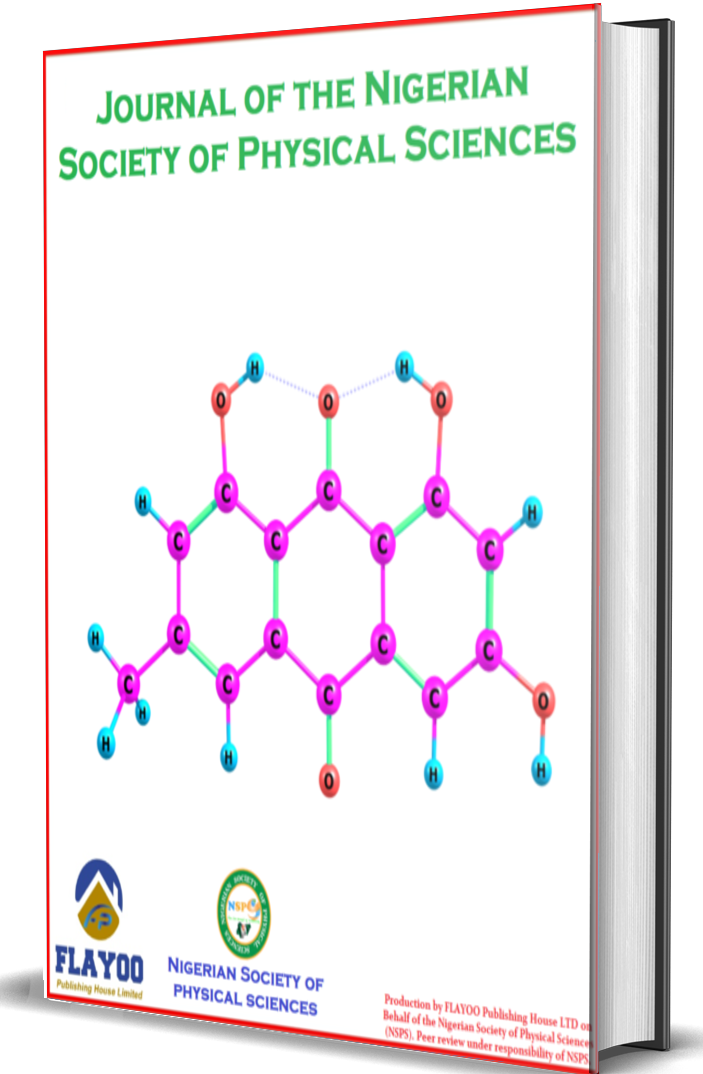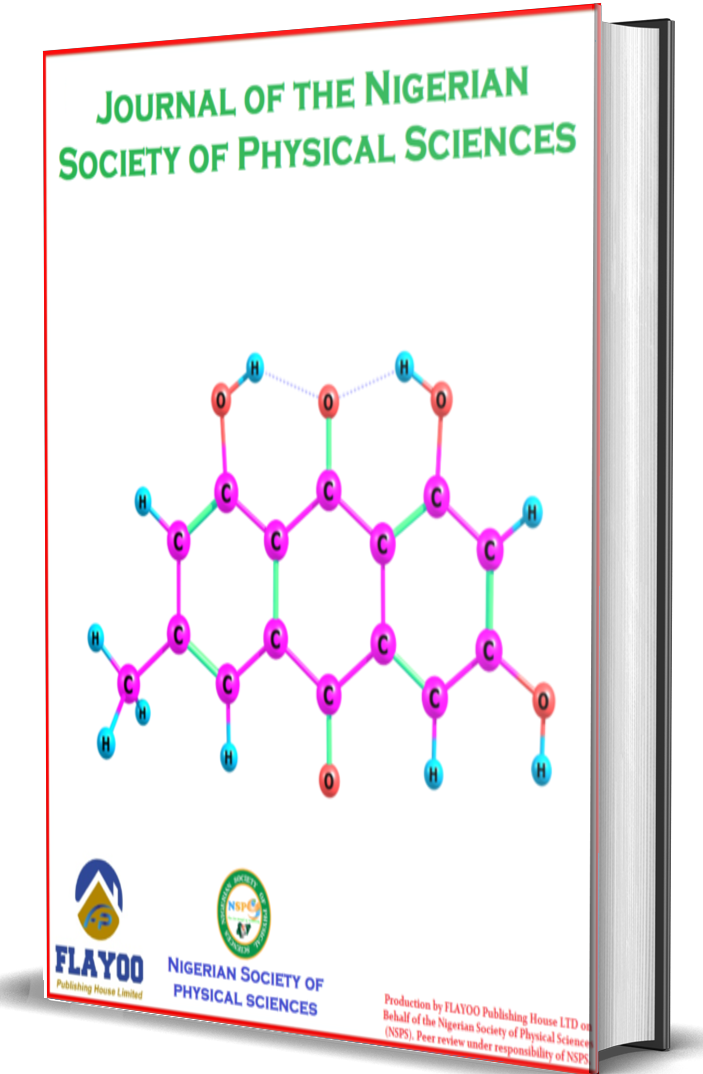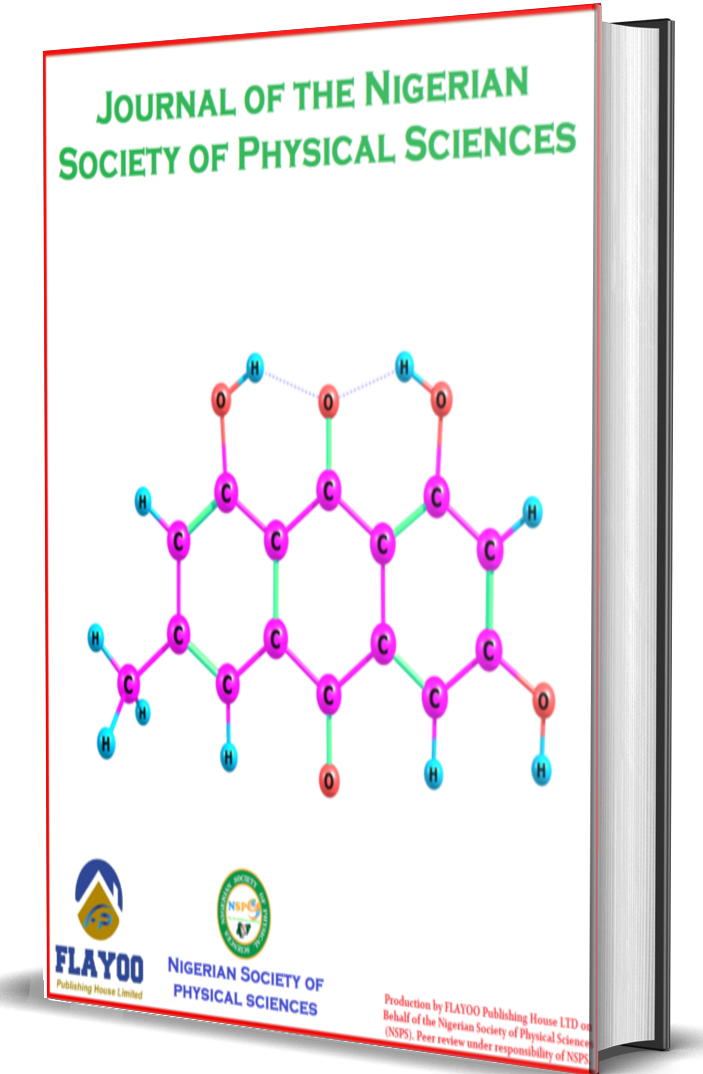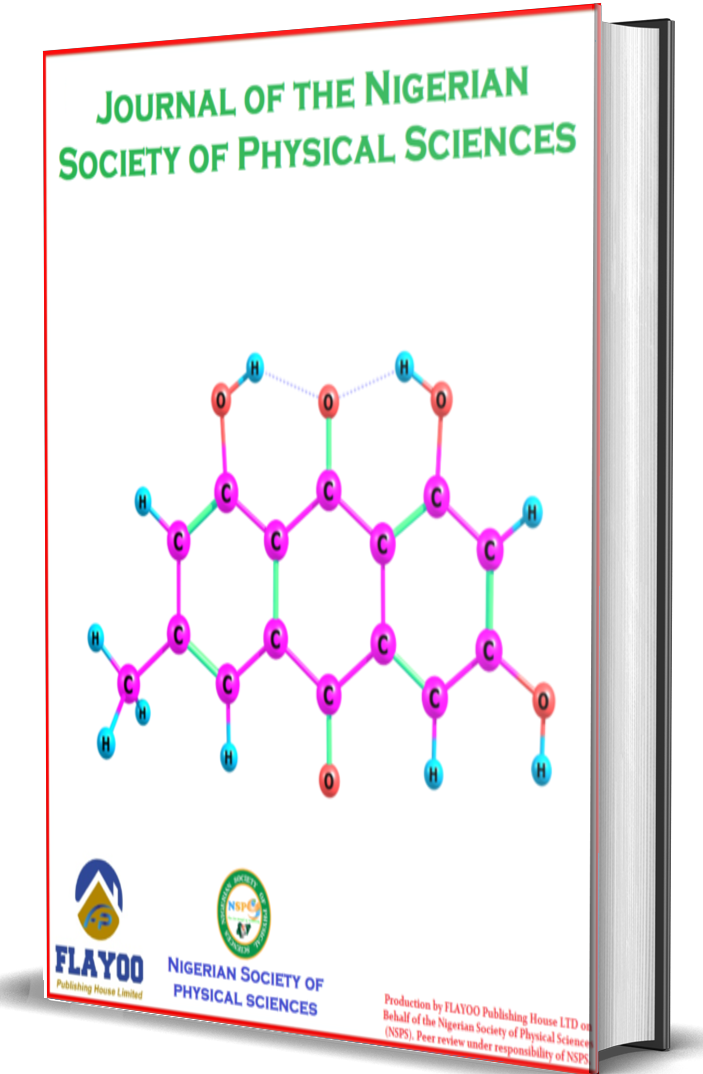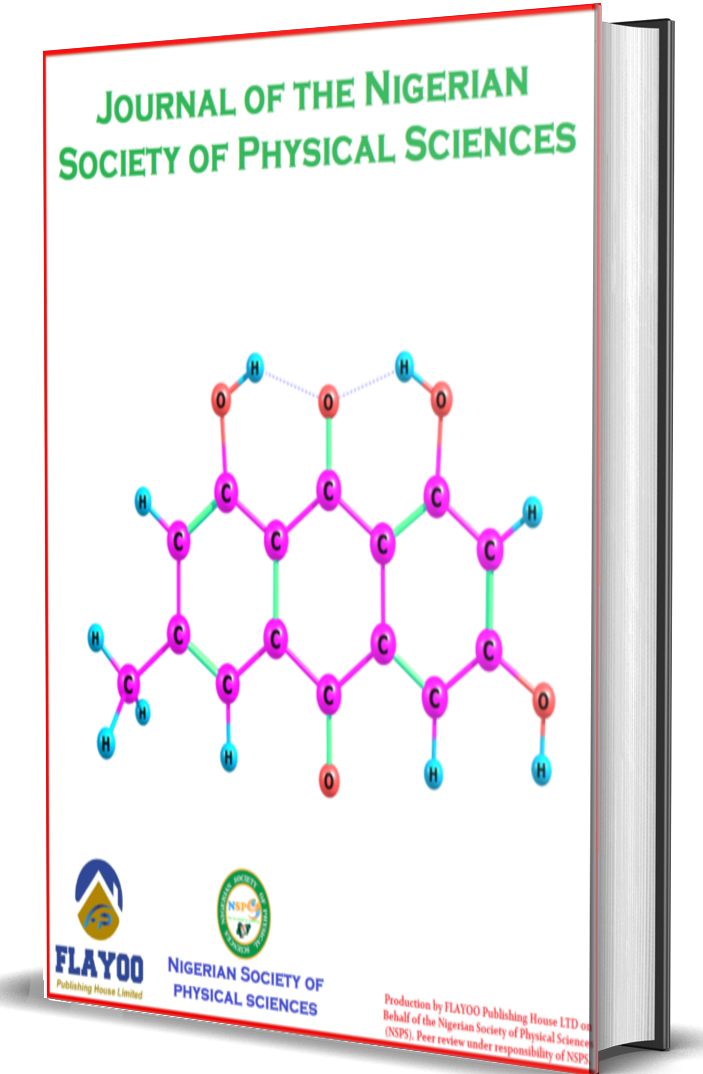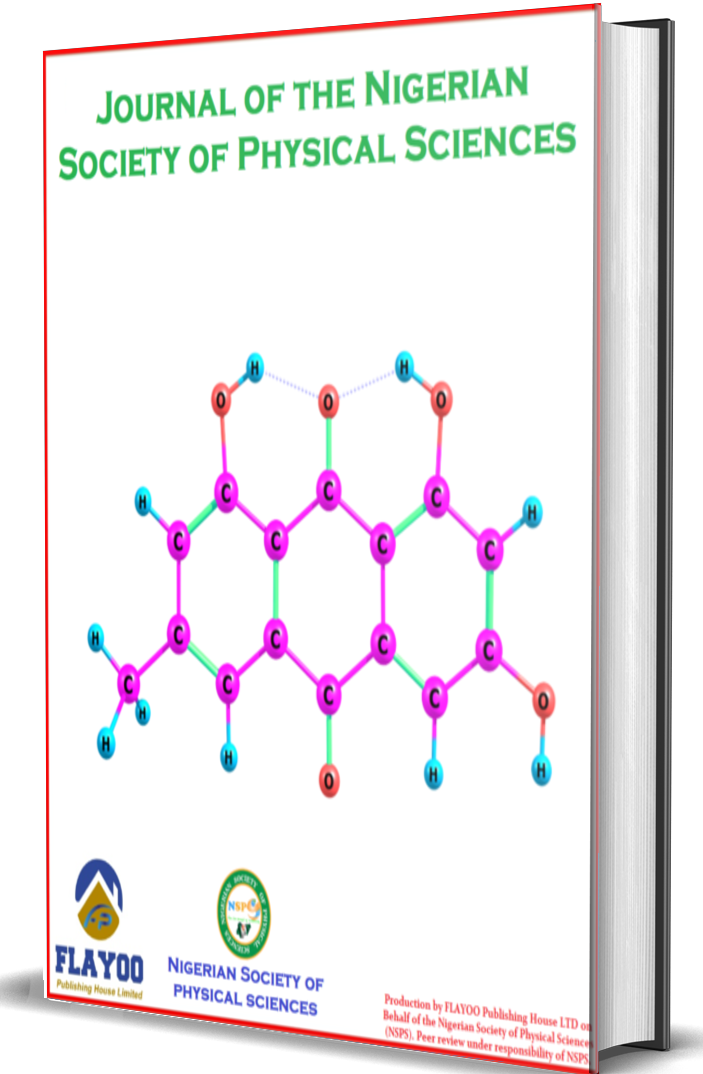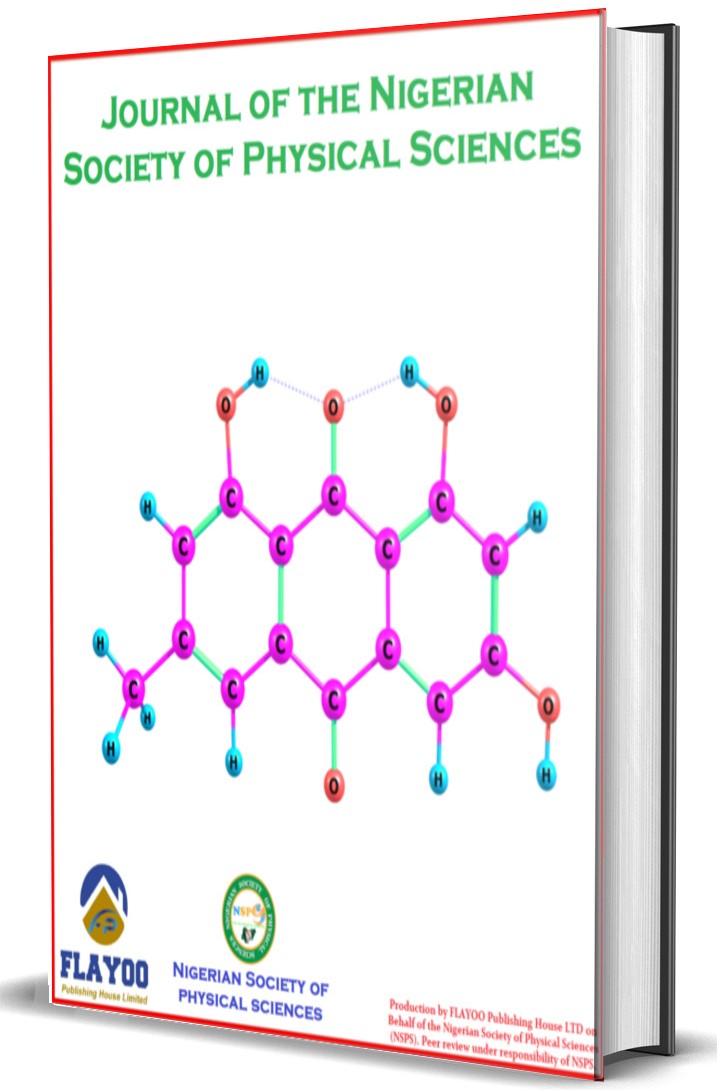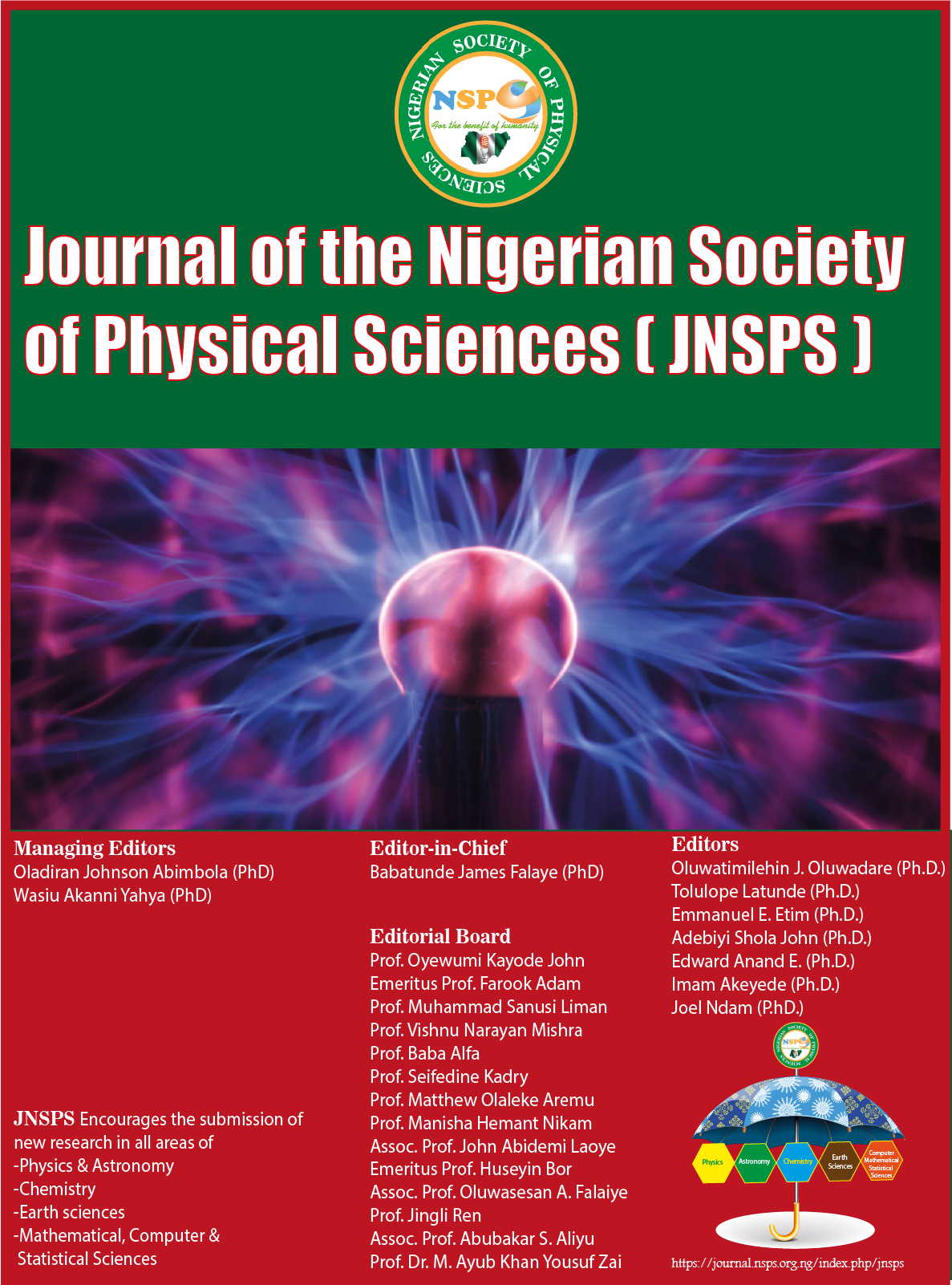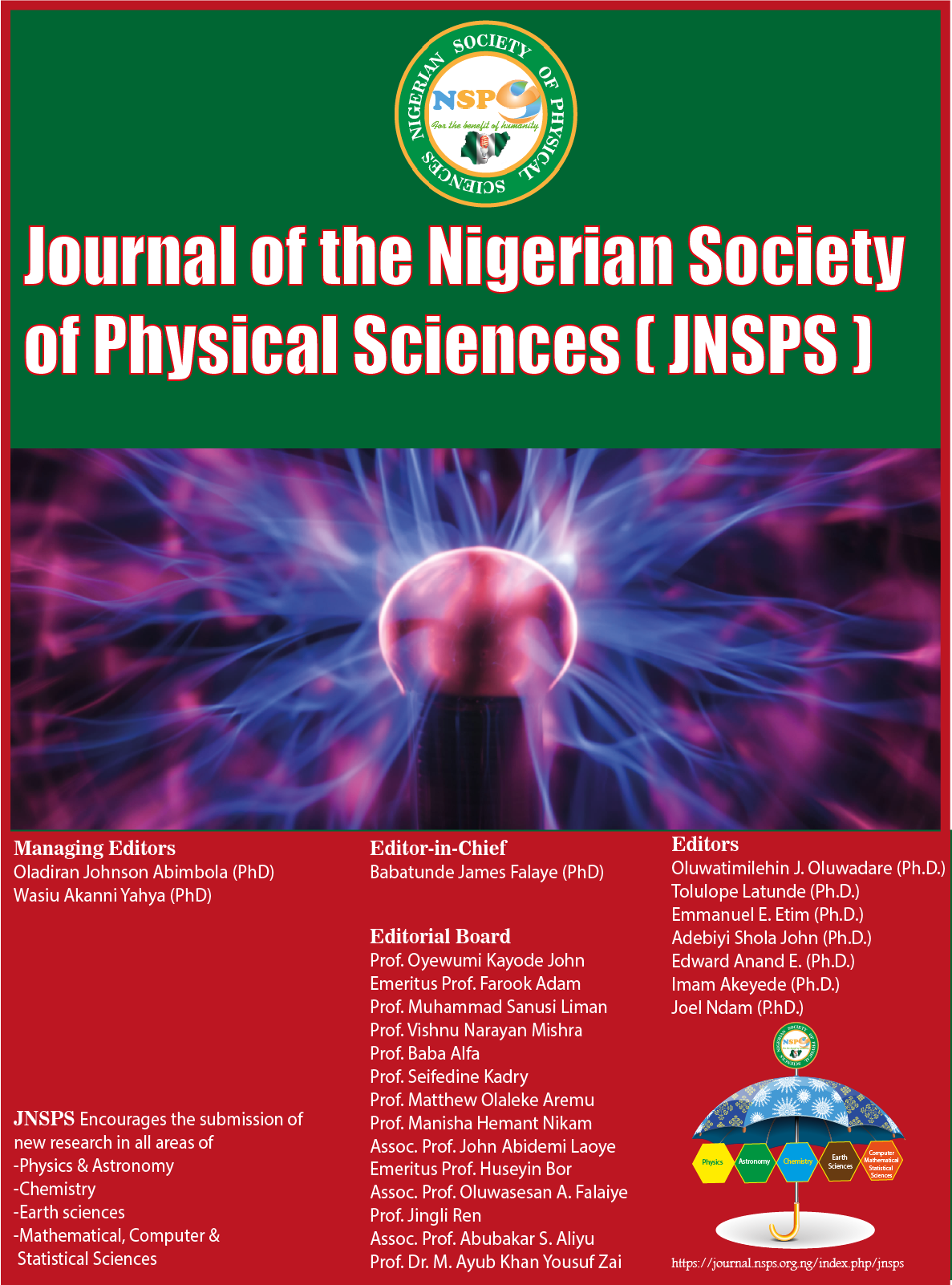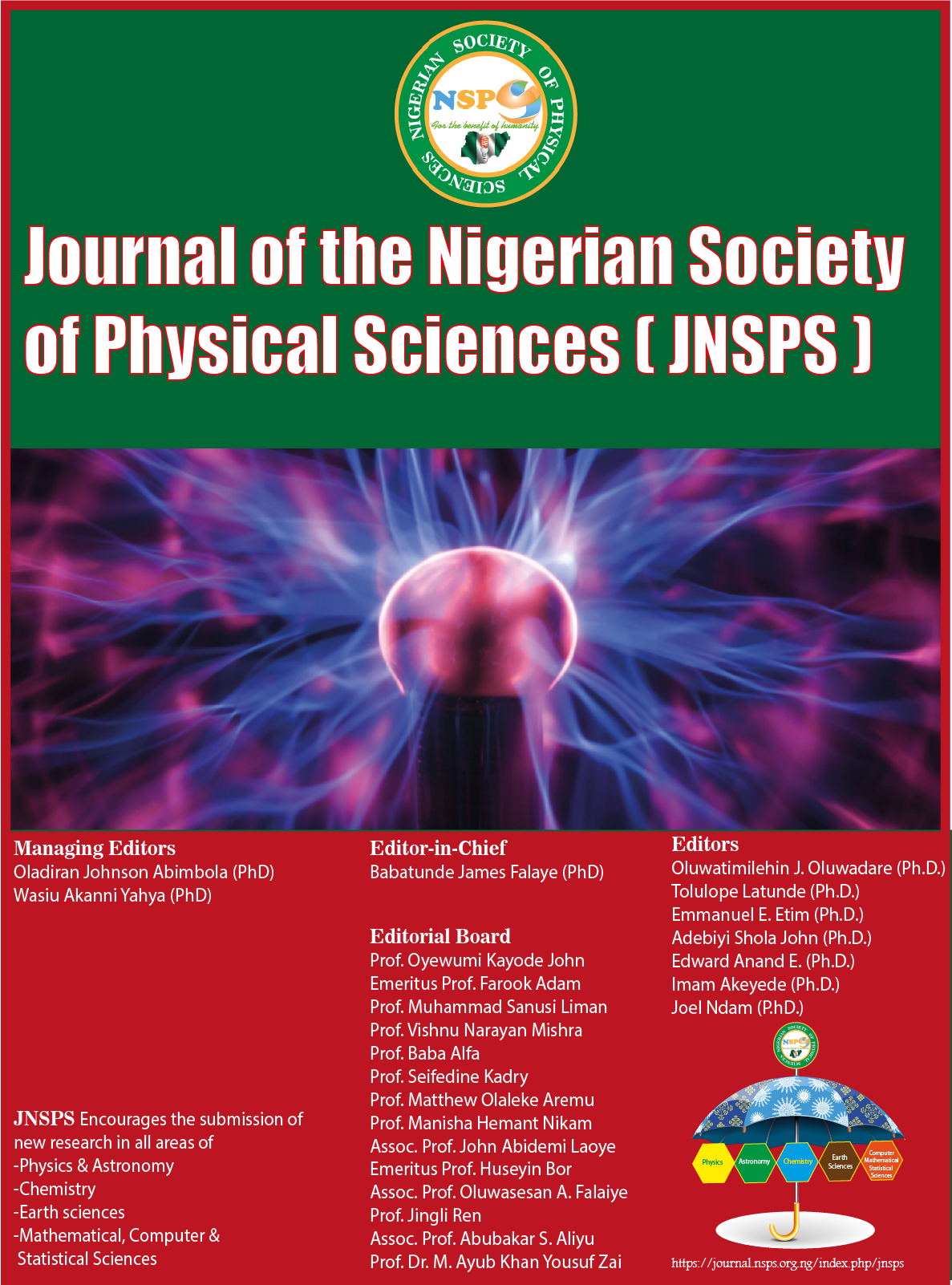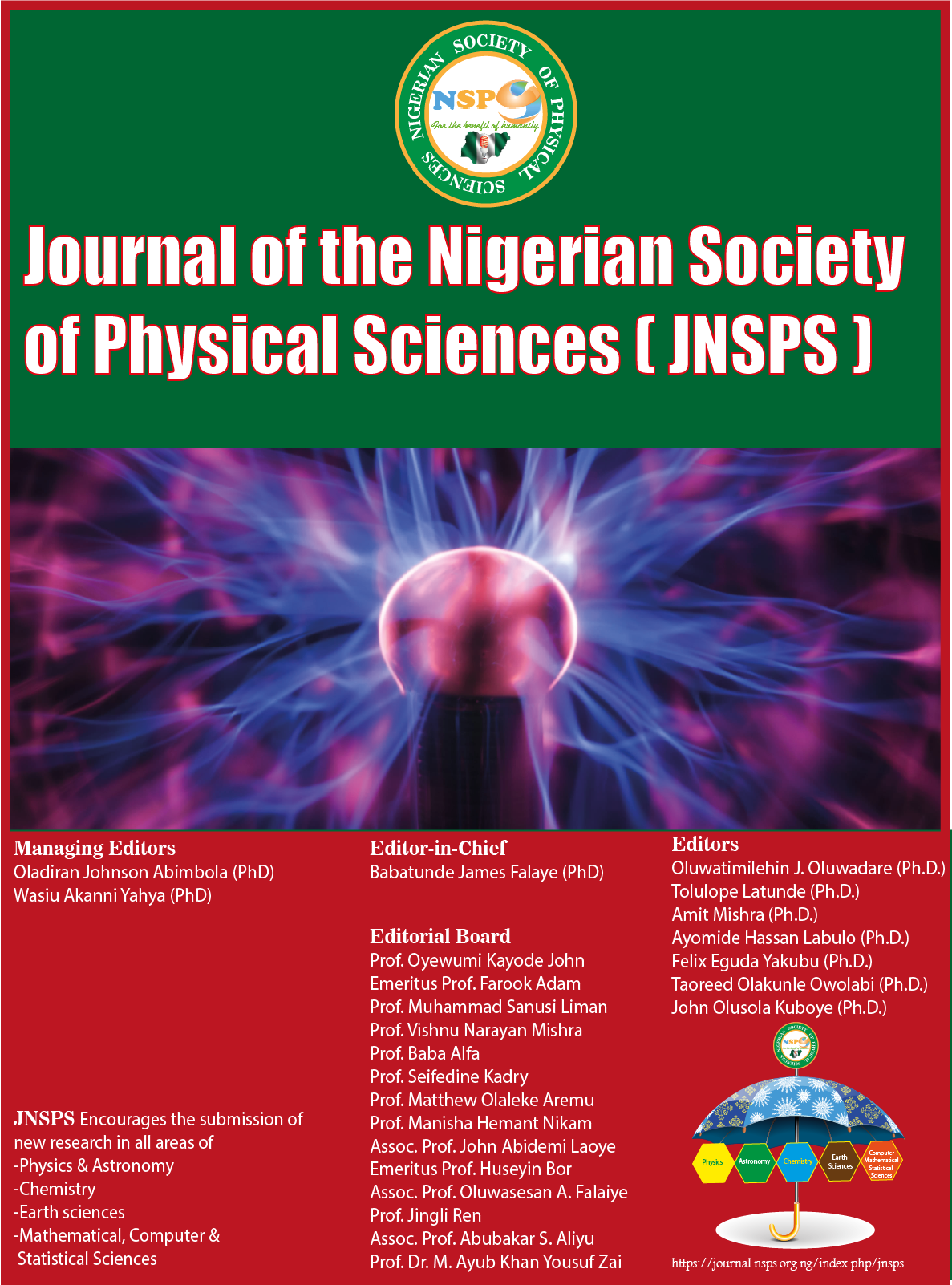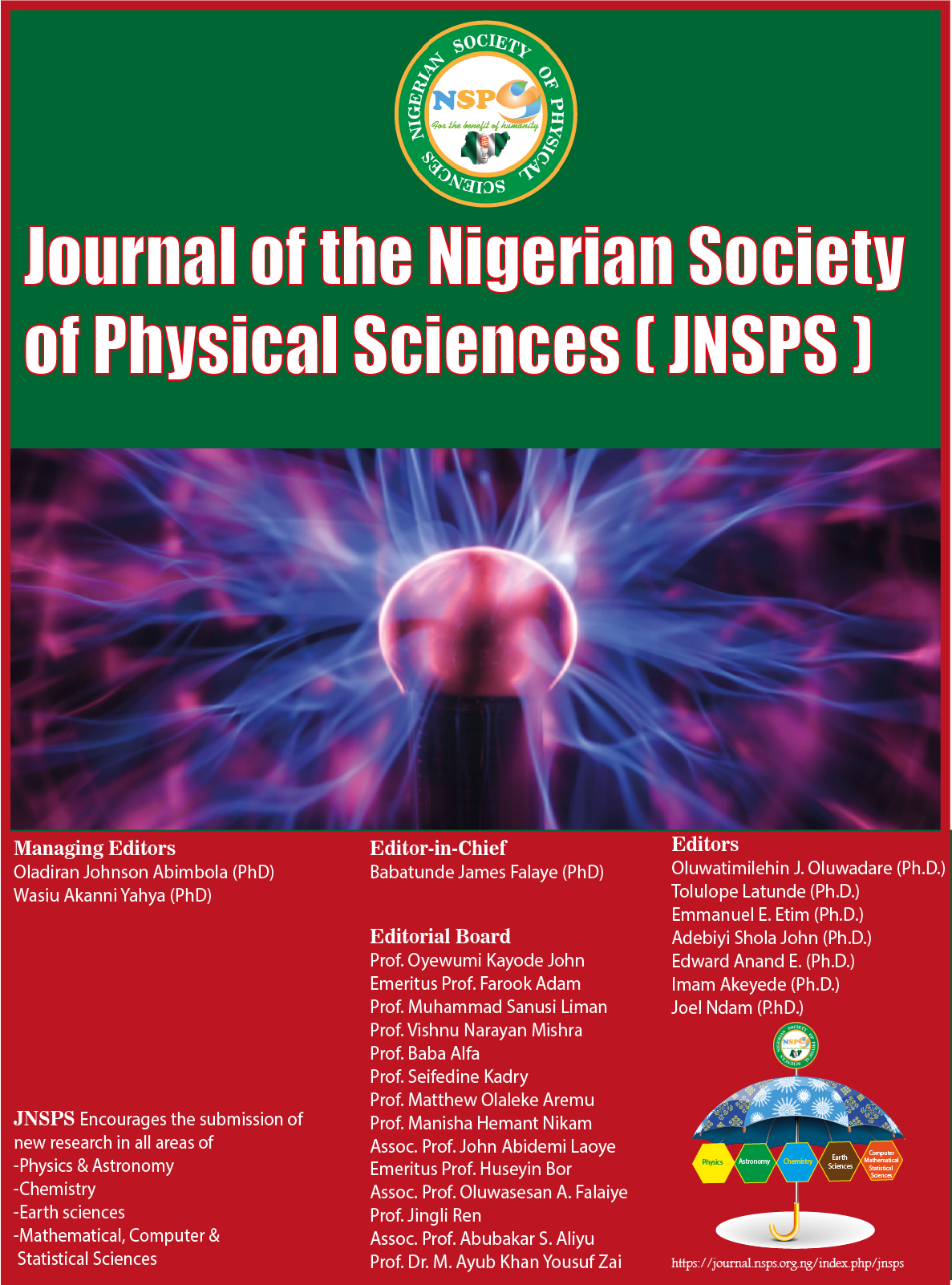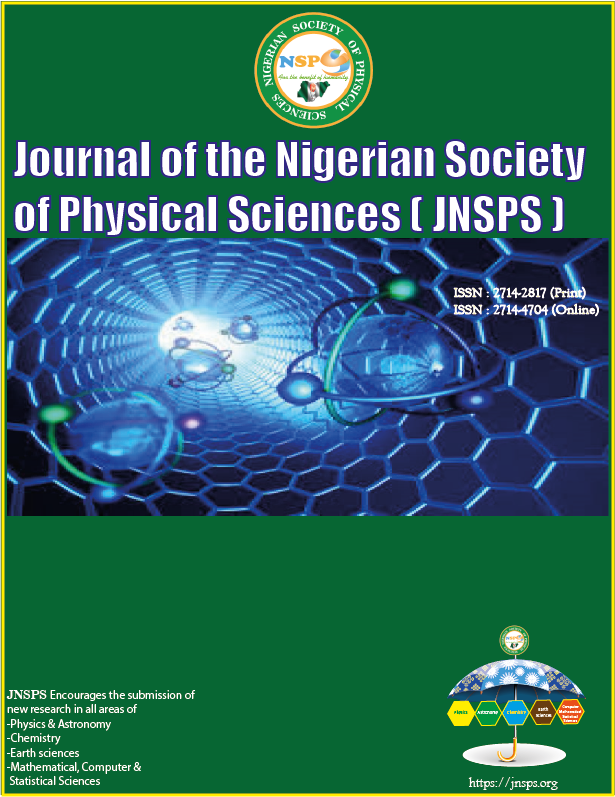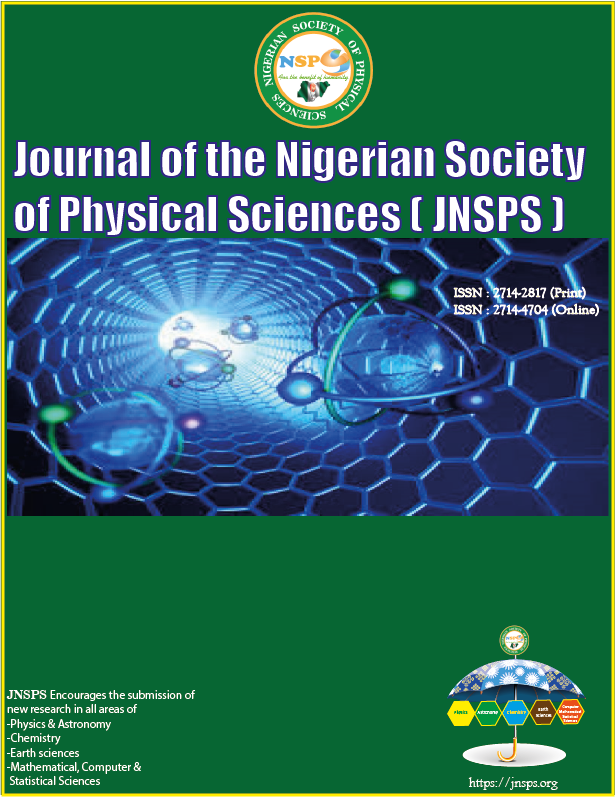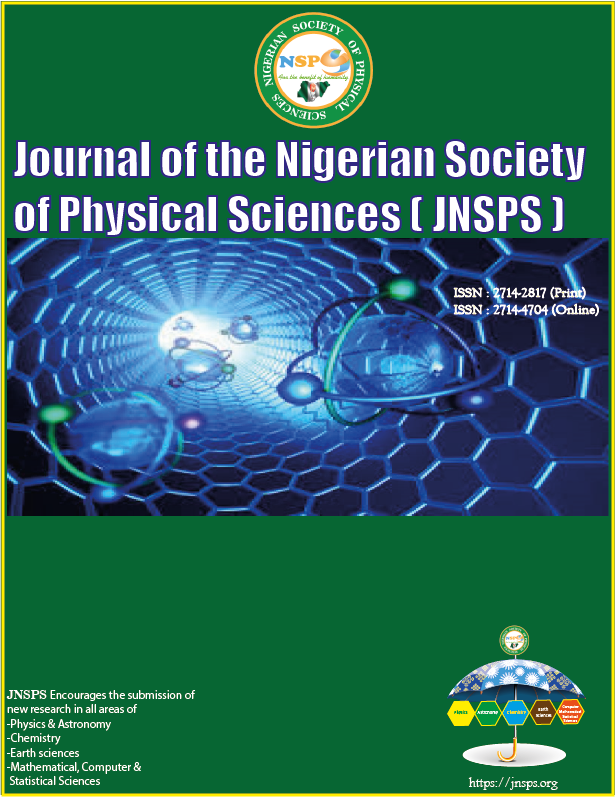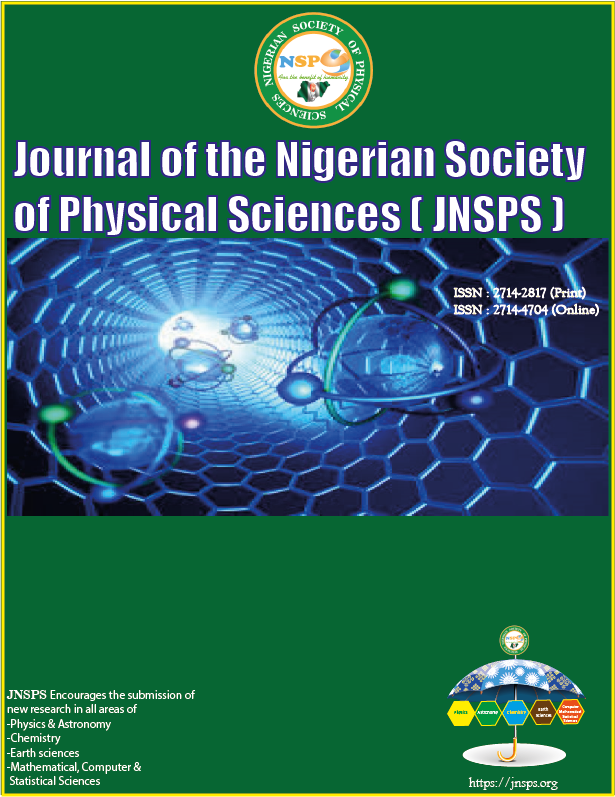Archives
-
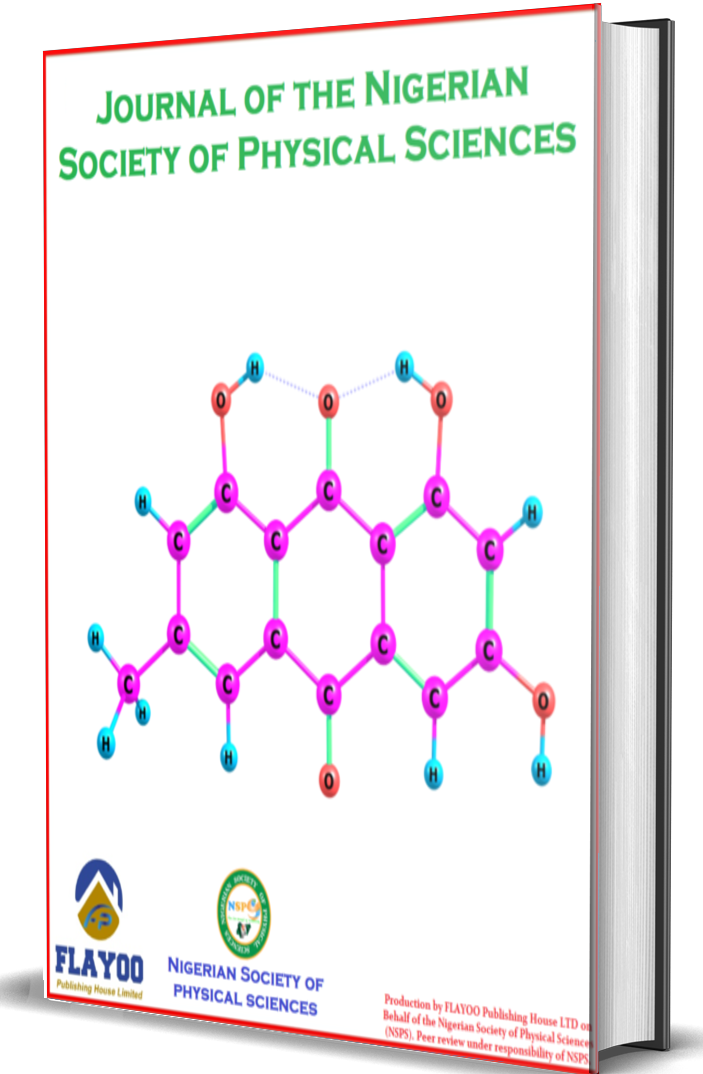
Volume 7, Issue 3, August 2025
We are pleased to present Volume 7, Issue 3 (August 2025) of the Journal of the Nigerian Society of Physical Sciences (JNSPS), a multidisciplinary collection of scholarly works that continue to push the boundaries of scientific inquiry and innovation. This issue features high-quality research across Chemistry, Computer Science, Earth Sciences, Mathematics & Statistics, and Physics & Astronomy, showcasing novel methodologies, impactful results, and practical implications.
In the Chemistry section, the focus is on sustainability and biomedical applications. One study investigates environmentally secure methods for industrial solid waste disposal through incineration, while another explores the synergistic antimicrobial properties of hydroxyapatite and chitosan composites with gentamicin, supported by computational approaches such as density functional theory and molecular docking.
The Computer Science contributions reflect a rich blend of algorithmic and application-driven innovation. Research in epidemic data modeling utilizes machine learning techniques to manage class imbalance, enhancing disease surveillance systems. A novel hybrid deep learning framework, integrating CNN, LSTM, and attention mechanisms, is proposed for air quality prediction. Photovoltaic power forecasting benefits from advanced feature selection and signal decomposition techniques. Additional studies focus on path optimization algorithms, high-dimensional survival data analysis, tweet classification during disaster scenarios, and cyber-physical intrusion detection using deep autoencoders. Moreover, a fuzzy-optimized random forest model addresses the growing concern of technostress classification.
In Earth Sciences, a comparative geochemical analysis sheds light on lithium enrichment mechanisms within aquifers. Sedimentological and weathering signatures of claystones, biostratigraphic reconstructions from the Niger Delta Basin, and tectonic insights from satellite-based geological mapping expand our understanding of Nigerian geology. Another study deciphers provenance and tectonic settings through the geochemical fingerprinting of Patti Formation shales.
Mathematics & Statistics is represented through contributions addressing both theoretical and applied challenges. Methods for discretizing Caputo time-fractional advection-diffusion equations are presented alongside numerical algorithms for image de-blurring. Feature selection for hybrid survival models, optimal control strategies in climate dynamics, and simulations of micropolar fluid dynamics with heat transfer enrich the field with computational depth and real-world relevance.
The Physics & Astronomy section includes a theoretical exploration of vibrational resonance phenomena within biophysical systems incorporating fractional-order damping. Another important contribution evaluates health risks associated with radionuclide exposure in industrial environments, providing essential data for public health interventions.
This issue reflects our commitment to advancing scientific discourse and fostering interdisciplinary research. We extend our gratitude to all contributors, reviewers, and editorial board members for their unwavering dedication and scholarly integrity.
B. J. Falaye
Editor-in-Chief
Journal of the Nigerian Society of Physical Sciences -
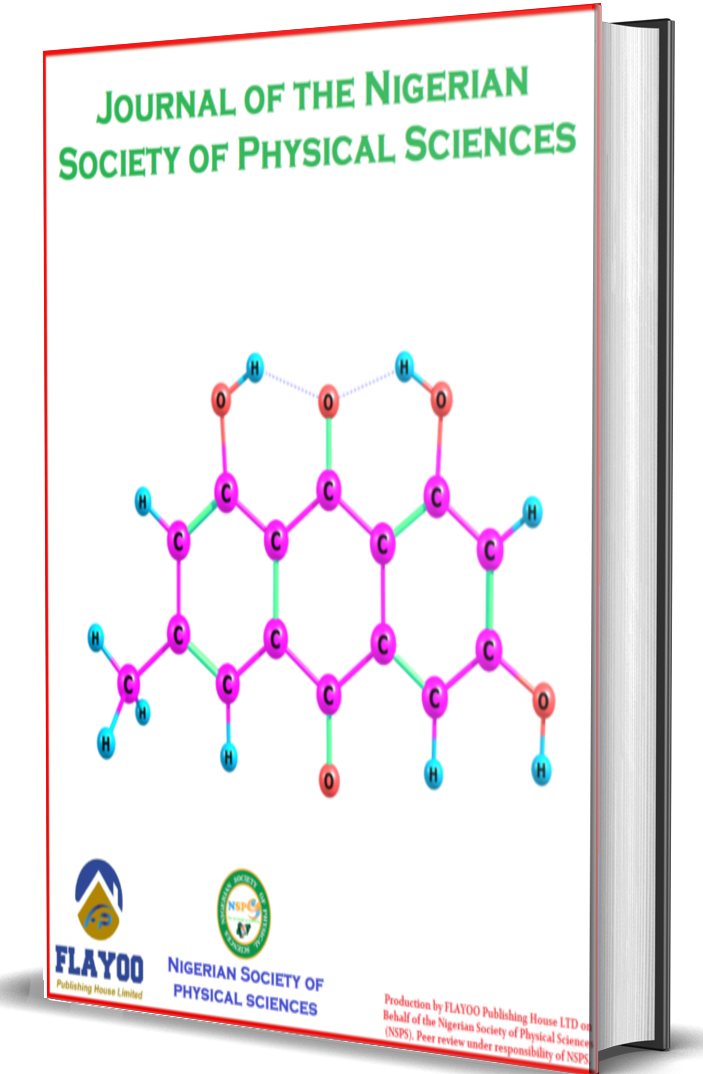
Volume 7, Issue 2, May 2025
It is with great pleasure that we present to our readers the second issue of Volume 7 of the Journal of the Nigerian Society of Physical Sciences. This issue continues our commitment to disseminating high-quality, multidisciplinary scientific research across the full spectrum of the physical sciences.
In this edition, we showcase 24 peer-reviewed articles spanning six major disciplines—Chemistry, Computer Science, Earth Sciences, Mathematics & Statistics, Physics & Astronomy, and interdisciplinary health-related modeling. These contributions reflect not only the vibrancy of African-led research but also an increasing global collaboration in physical science innovations.
Highlights from this issue include a fascinating structural study on 2–(2–hydroxybenzoyl) hydrazinecarbothioamide ligand, alongside thermodynamic and biological investigations of its lanthanide complexes—advancing coordination chemistry and medicinal potential. In sustainable science, an impactful study explores biochar-based remediation of vancomycin-contaminated water, reinforcing the journal's advocacy for environmentally-conscious solutions.
Our Computer Science section features seven innovative papers, notably including a compiler-assisted quantum code generator and a DCNN-based pneumonia detector, both at the frontier of machine intelligence and quantum computation. These works illustrate the dynamic interface between theoretical computing and real-world medical and industrial applications.
The Earth Sciences section provides new insight into aerosol heating effects, radioactivity in solid waste dumpsites, and advanced 3D reservoir modeling in the Niger Delta, serving as critical tools for environmental monitoring and natural resource management.
Mathematical modeling remains a powerful theme throughout this issue. We introduce a new Maxwell-Log logistic distribution for mortality data and offer novel solutions to advection-diffusion equations relevant to air pollution dynamics. Also included is an analytical model for Malaria–Zika virus co-infection, demonstrating the crucial role of mathematical epidemiology.
In the Physics and Astronomy section, we present a statistical analysis of the q-deformed hyperbolic modified Pöschl–Teller potential, and a detailed investigation into photon/proton interactions with boron-based chemotherapeutic drugs, reaffirming the journal’s dedication to applied and theoretical physics that supports medical innovation.
This issue features contributions from authors affiliated with institutions across seven countries:
Nigeria, China, Malaysia, India, the United Kingdom, South Korea, and Thailand. This growing international presence is a testament to the journal’s expanding global relevance and appeal.We commend all contributing authors, reviewers, and editorial staff for their efforts in making this issue a success. As the journal continues to grow in impact and visibility, we encourage our readers to engage, cite, and share this work, and to consider JNSPS for their future publications.
Together, let us continue to promote science that is rigorous, relevant, and responsive to societal needs.
B. J. Falaye, PhD, LNSPS
Editor-in-Chief, Journal of the Nigerian Society of Physical Sciences -
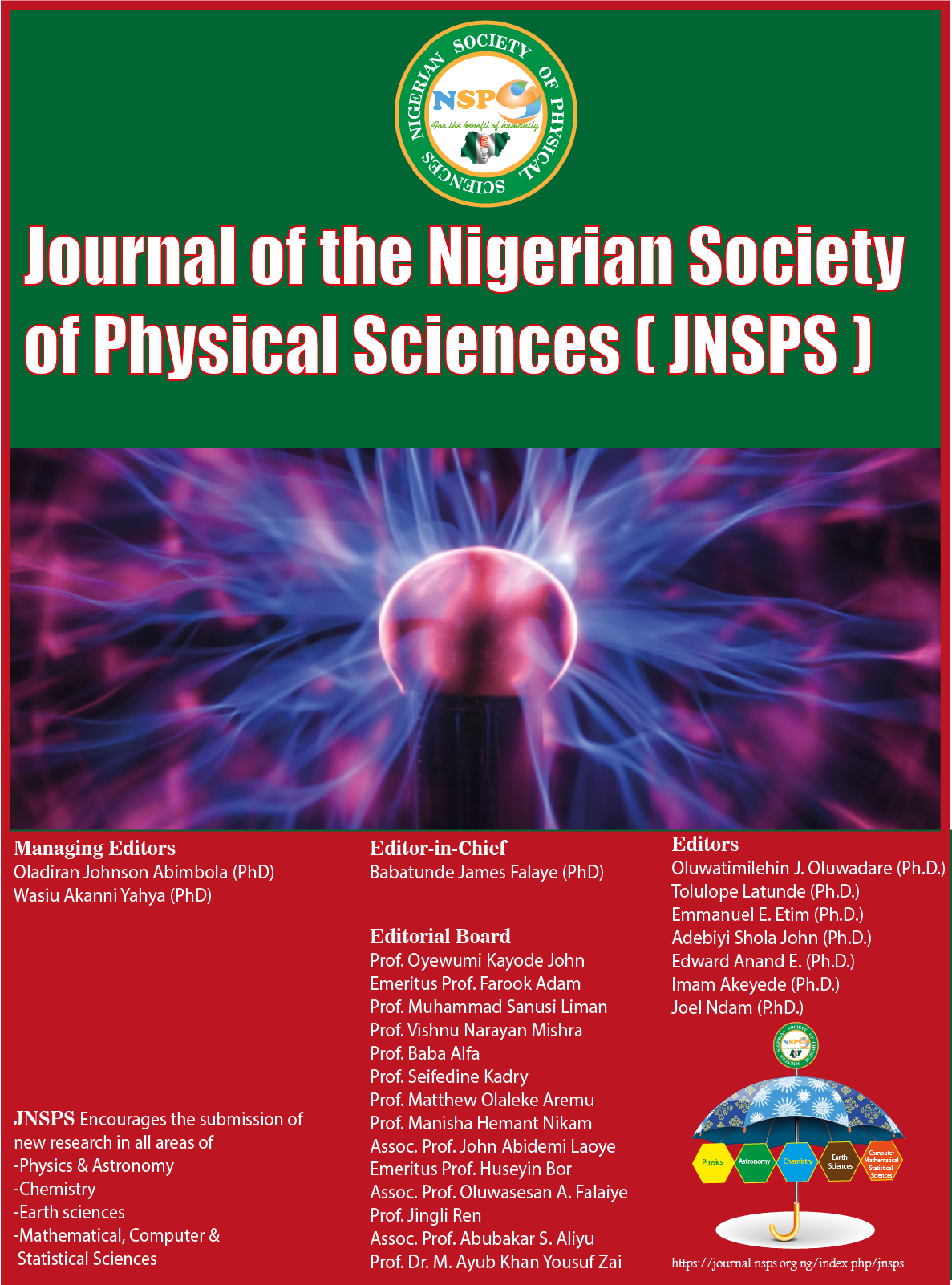
Volume 4, Issue 4, November 2022
On behalf of the Editorial Team and Reviewers, I have the great pleasure of presenting this volume 4, issue 4, of the Journal of the Nigerian Society of Physical Sciences (JNSPS) to the research community and the world at large, comprising those seeking to publish their works and those who wish to keep up with the latest findings in their areas of research.
This current edition includes 24 articles by authors from nine different countries: Nigeria, South Africa, Egypt, Iraq, India, Gambia, the UK, Morocco, and Malaysia. The papers included in this issue are in the areas of nanoparticles, magnetic helicity, biomass combustion, environmental chemistry, numerical analysis, geometric function theory, material chemistry, ionospheric physics, forecasting and data analysis, soft computing techniques, cryptography, matrix theory, and database management.
It has been observed that despite the giant strides made in the detection and prevention of SQLiAs by several researchers, an ideal approach is still far from over as most existing techniques still require improvement, especially in the area of addressing the weak characterization of input vectors, which often leads to low prediction accuracy. To deal with this concern, Shehu Magawata Shagari and co-researchers put forward a hybrid optimized Logistic Regression (LR) model with Improved Term Frequency Inverse Document-Frequency (ITFIDF-LR). To show the effectiveness of the proposed approach, attack datasets are used and evaluated using selected performance metrics, i.e., accuracy, recall, specificity, and false-positive rate.
In another interesting report by Oluwasina et al., it was found that anacardic acid holds potential for the preparation of some nanosized cellulose. The study by El Mehdi Chouit in the area of forecasting and data analysis and co-researchers shows that the FBProphet model is more accurate in predicting the prevalence of COVID-19. It can help guide the government's efforts to prevent the virus' spread. The interesting results presented in this issue are not limited to these. Others can be found there, in the arches.
In general, researchers and practitioners working in related fields, as well as the general public interested in physical sciences, would be interested in this issue.
Babatunde James Falaye
Department of Physics,Federal University of Lafia,
Nasarawa State, Nigeria
Editor-in-Chief, JNSPS -
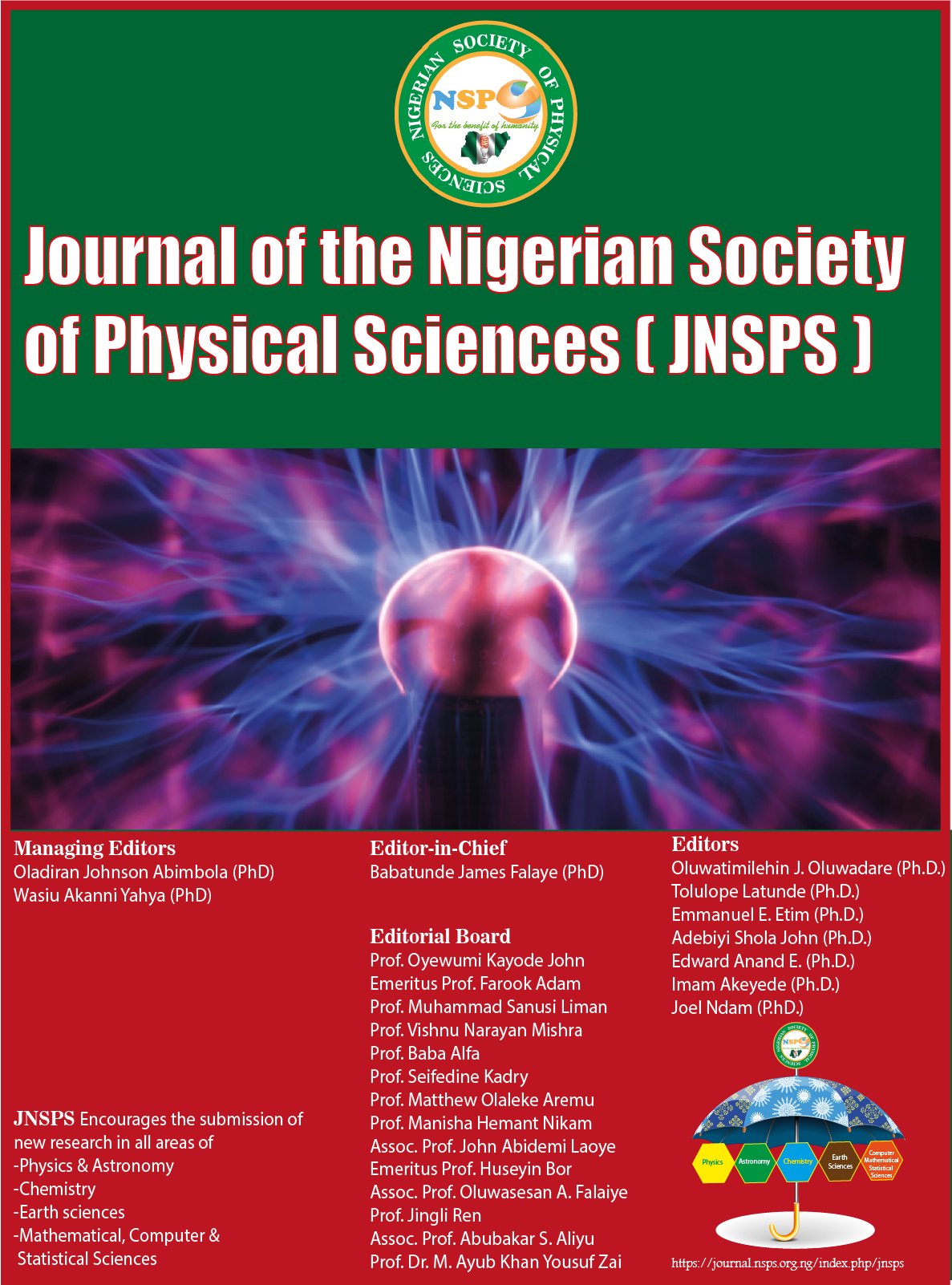
Volume 4, Issue 3, August 2022
Volume 4, Issue 3, Journal of the Nigerian Society of Physical Sciences (JNSPS)
https://doi.org/10.46481/jnsps.2022.4.3On behalf of the Editorial Team and Reviewers, I have the great pleasure of presenting this volume 4, issue 3 of the Journal of the Nigerian Society of Physical Sciences (JNSPS) to the research community and the world at large, comprising those seeking to publish their works and those who wish to keep up with the latest findings in their areas of research.
This current edition includes 23 articles by authors from eight different countries: Nigeria, Malaysia, India, UK, Oman, Iraq, Pakistan, Botswana. The papers included in this issue are in the areas of atmospheric physics, nuclear physics, computational mathematics, numerical analysis, atmospheric and environmental physical chemistry, multicollinearity, machine learning, material science, mathematical modelling, graph theory, and distribution.
Some of the useful investigations conducted therein contribute to a fundamental understanding of the effect of graphene materials (GRMs) on the optoelectronic properties of perovskite solar cells (PSCs), and it confirms the promising prospects of achieving low-cost, efficient, and stable PSCs for commercialization with graphene materials. Other findings were found to be useful in providing a perception of the treatment caused by excessive consumption of fatty foods, thereby lowering the risk of cancer, hypertension, and many heart-related diseases. Another study also found that the synthesized ZnO nanoparticles provide antimicrobial efficacy against clinical strains of Bacillus subtilis and Staphylococcus aureus, as well as against standard strains of Escherichia coli. Several fields, including cosmetics and pharmaceuticals, can benefit from biosynthesized nanoparticles.
In general, this issue would be of interest to researchers and practitioners working in related fields, as well as the general public interested in physical sciences.
Babatunde James Falaye
Department of Physics, Federal University of Lafia, Nasarawa State, Nigeria
Editor-in-Chief, JNSPS -
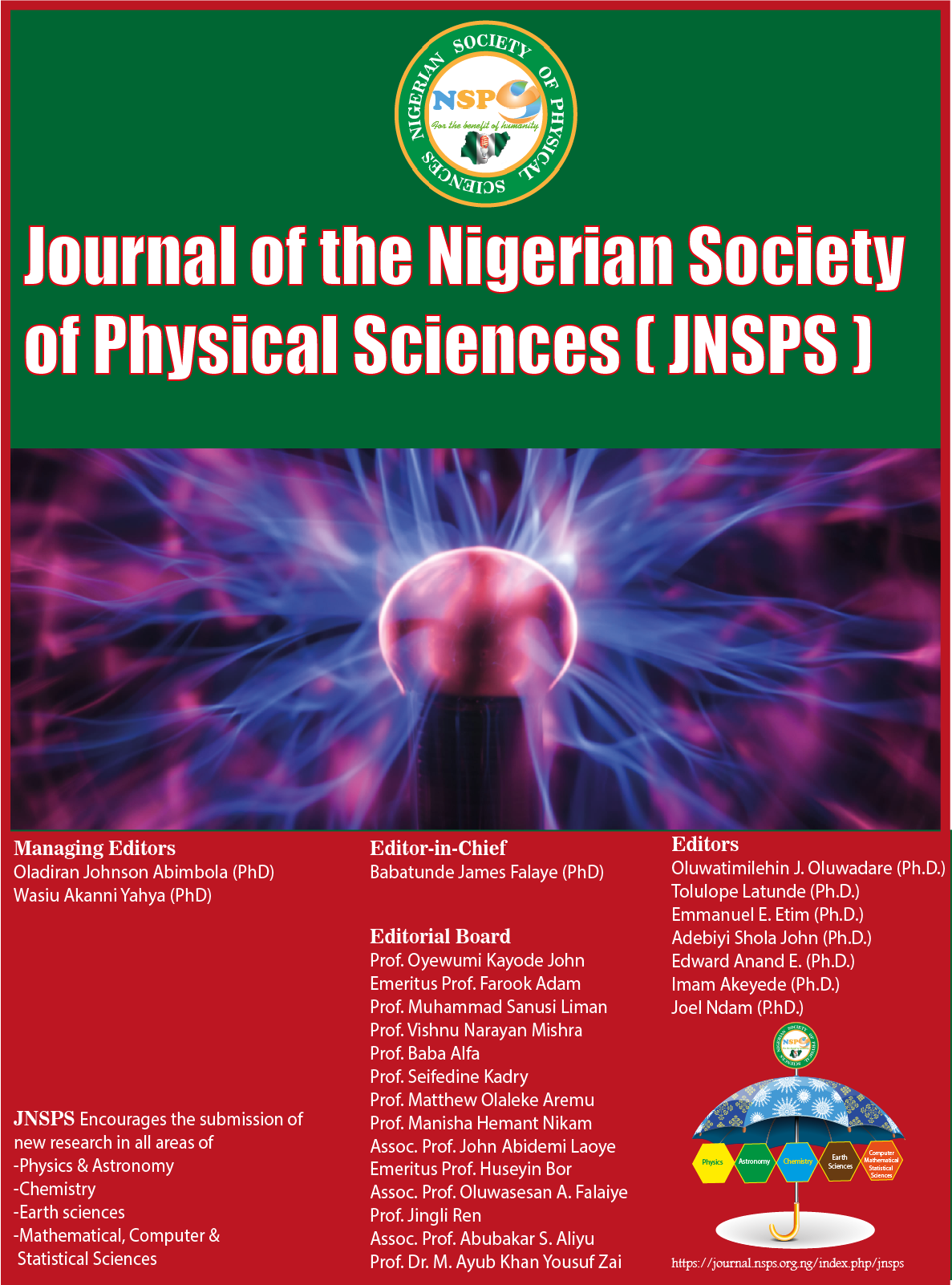
Volume 4, Issue 2, May 2022
Excellent news that I am very happy to share with our readers is the ranking of our journal by Scientific Journal Rankings (SJR) as Q4 (SJR : 0.15, Link: https://www.scimagojr.com/journalsearch.php?q=21101044730&tip=sid&clean=0). Undoubtedly, in the coming years, we will witness more growth in the quality and reputation of our journal. This achievement is the result of the great work of our editorial team, who are constantly working on its improvement. I would like to congratulate our reviewers and, most importantly, our authors and readers on this new achievement and thank them for their constant effort devoted to the journal.
This current edition includes 16 articles by authors from six different countries: Namibia, South Africa, Morocco, India, Nigeria, Hungary. The papers included in this issue are in the areas of Engineering Geology,Green ICT, Software solution, Fuzzy Mathematics, Environmental analytical Chemistry, Mathematical Sciences, Quantum physics, Multivariate Analysis, Radiation and medical Physics and Computational Statistics.
Some interesting results therein will enhance clean industrial process in the textile industry and also promote sustainable cities and communities through responsible consumption and production as highlighted by sustainable development goals (SDG) 11 and 12.
This issue would be useful to researchers and practitioners working in the related areas and as well to the public interested in physical sciences.
Dr. Babatunde James Falaye
Editor-in-Chief, Journal of the Nigerian Society of Physical Sciences
Indexing : Scopus, DOAJ, etc -
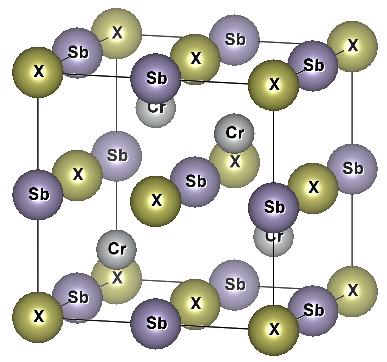
Volume 4, Issue 1, February 2022
The Editor in Chief, on behalf of the Editorial Team and Reviewers, has great pleasure in presenting this volume 4, issue 1 of the Journal of the Nigerian Society of Physical Sciences (JNSPS), to the research community and the world at large, comprising those seeking to publish their works and those who wish to keep up with the latest findings in their areas of research.
This current edition includes 20 articles by authors from five different countries: Nigeria, UK, Oman, Malaysia, and India. The papers included in this issue are in the areas of minerals engineering, glass technology, biodiesel production, nanotechnology, mathematical sciences, and bio statistics.
This issue would be useful to researchers and practitioners working in the related areas and as well to the public interested in physical sciences.
Dr. Babatunde James Falaye
Department of Physics, Federal University of Lafia, Nasarawa State, Nigeria
Editor-in-Chief, JNSPS

